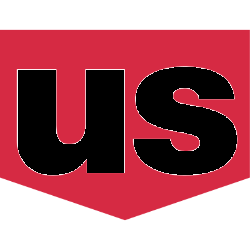Overall, U.S. Bancorp exhibits strong business quality with solid revenue growth, effective expense management, and a healthy capital position. However, it faces challenges with modest loan growth and competitive pressures in the payments sector. Looking forward, the bank has promising growth prospects supported by revenue growth guidance and innovation initiatives, although it must navigate industry competition carefully.
Analysis Date: January 16, 2025
Last Updated: March 12, 2025
Trailing Twelve Months (TTM) values provide a view of the company's performance over the last year.
Graham Value Metrics
Benjamin Graham's value investing approach focuses on finding stocks with a significant margin of safety between their intrinsic value and market price.
Intrinsic Value
Estimated fair value based on Graham's formula
$114.18
Current Market Price: $36.78
IV/P Ratio: 3.10x (>1.0 indicates undervalued)
Margin of Safety
Gap between intrinsic value and market price
68.0%
Graham recommended a minimum of 20-30% margin of safety
Higher values indicate a greater potential discount to fair value
ROE: 10.982238204206167
ROA: 0.2451652469785558
Gross Profit Margin: 98.74672870020355
Net Profit Margin: 18.31637103809247
Trailing Twelve Months (TTM) values provide a view of the company's performance over the last year.
Strong Net Profit Margin
USB's net profit margin stands at 18.32%, indicating effective cost management and strong profitability relative to sales.
Good Return on Equity
A return on equity of 10.98% shows that USB is effectively using shareholders' equity to generate profits, which is a positive indicator for investors.
Moderate Operating Profit Margin
0.1841
Operating Profit Margin
The operating profit margin of 18.41% is solid but could be improved to enhance competitiveness against peers.
About Profitability Metrics
Profitability metrics measure a company's ability to generate earnings relative to its revenue, operating costs, and other relevant metrics. Higher values generally indicate better performance.
Return on Equity (ROE)
Measures how efficiently a company uses its equity to generate profits
10.98%
10%
15%
Higher values indicate better returns for shareholders
TTM (as of 2025-04-16)
Return on Assets (ROA)
Measures how efficiently a company uses its assets to generate profits
0.25%
3%
7%
Higher values indicate better asset utilization
TTM (as of 2025-04-16)
Gross Profit Margin
Percentage of revenue retained after accounting for cost of goods sold
98.75%
20%
40%
Higher values indicate better efficiency in production
TTM (as of 2025-04-16)
Net Profit Margin
Percentage of revenue retained after accounting for all expenses
18.32%
8%
15%
Higher values indicate better overall profitability
TTM (as of 2025-04-16)
Low Debt to Assets Ratio
USB's debt to assets ratio of 9.67% indicates a conservative approach to leverage, suggesting financial stability.
Current and Quick Ratios at Zero
The current ratio and quick ratio of 0.0 indicate potential liquidity issues, meaning USB may struggle to cover short-term liabilities.
High Debt to Equity Ratio
The debt to equity ratio of 1.12 indicates that USB is quite leveraged, which could pose risks in economic downturns.
About Financial Health Metrics
Financial health metrics assess a company's ability to meet its financial obligations and its overall financial stability.
Debt to Equity Ratio
Total debt divided by total equity
1.25x
1.0x
2.0x
Lower values indicate less financial leverage and risk
Less than 1.0 is conservative, 1.0-2.0 is moderate, >2.0 indicates high risk
Q4 2024
Current Ratio
Current assets divided by current liabilities
0.28x
1.0x
2.0x
Higher values indicate better short-term liquidity
Less than 1.0 is concerning, 1.0-2.0 is adequate, greater than 2.0 is good
Q4 2024


